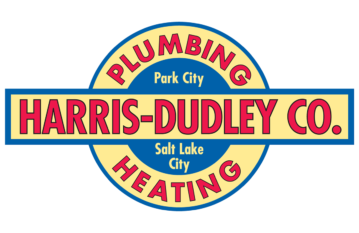How Snowmelt Systems Transform Winter Driveway Maintenance
A driveway snowmelt system is more than a luxury—it’s a functional solution for those who face heavy snow and ice each winter. Instead of struggling with shovels or relying on harmful ice-melting chemicals, a snowmelt system uses radiant heat to keep your driveway clear and safe. These systems work by circulating a warm fluid or electric heating element beneath the driveway surface, melting snow before it can accumulate.
For homeowners, understanding how these systems work with different driveway materials—concrete, asphalt, and pavers—is critical. Each surface has unique properties that influence performance, installation methods, and long-term maintenance. Choosing the right pairing ensures not only comfort but also cost efficiency and extended driveway life.
What Makes Driveway Snowmelt Systems Effective
At the core of every driveway snowmelt system is the principle of radiant heat. There are two main types:
- Hydronic Systems – Use a network of tubing to circulate a heated water-glycol mix.
- Electric Systems – Use electric cables to generate heat directly.
The system is controlled by sensors that detect temperature and moisture, activating automatically when snow is present. The right choice of surface material maximizes heat transfer, reduces energy usage, and enhances durability.
Why Driveway Material Choice Matters
Not all driveway materials respond to heat in the same way. Some absorb and distribute warmth more effectively, while others may require extra considerations for expansion, contraction, or structural support.
The benefits of pairing the right surface with a snowmelt system include:
- Better Heat Transfer – Ensures faster melting and less energy waste.
- Increased System Longevity – Reduces stress on heating components.
- Improved Safety – Eliminates icy patches that can cause slips or vehicle skidding.
- Reduced Maintenance – Minimizes damage from snowplows or freeze-thaw cycles.
Concrete Driveways and Snowmelt Systems
Concrete is one of the most popular choices for driveways with snowmelt systems due to its durability and excellent thermal conductivity.
Advantages:
- Strong heat transfer capabilities.
- Long lifespan when properly installed.
- Works well with both hydronic and electric systems.
Installation Considerations:
- Heating elements or tubing are embedded directly into the concrete during pouring.
- Proper spacing ensures even heating across the entire surface.
- Expansion joints must be designed to accommodate both the driveway material and the heating system.
Usage Tips:
- Sealing the surface prevents moisture infiltration and enhances efficiency.
- Concrete’s density helps retain heat, allowing the system to operate less frequently.
Asphalt Driveways and Snowmelt Systems
Asphalt offers flexibility and faster installation compared to concrete, and it’s also compatible with both electric and hydronic systems.
Advantages:
- Smooth surface for even heat distribution.
- Easier to resurface if repairs are needed.
- Slightly more forgiving during freeze-thaw cycles due to flexibility.
Installation Considerations:
- Heating elements are laid on the base layer, and hot asphalt is poured over them.
- The asphalt temperature during installation must be carefully monitored to avoid damaging cables or tubing.
- Hydronic tubing often requires a protective layer to prevent punctures during paving.
Usage Tips:
- Routine sealing helps prolong lifespan.
- Because asphalt cools faster than concrete, it may require slightly more runtime in extreme conditions.
Paver Driveways and Snowmelt Systems
Paver driveways offer aesthetic appeal and excellent versatility, making them an attractive choice for homeowners who value style along with function.
Advantages:
- Easily repairable—individual pavers can be lifted for system maintenance.
- Allows natural expansion and contraction without cracking.
- Works with a variety of designs and finishes.
Installation Considerations:
- Heating elements are placed on a prepared base layer beneath the pavers.
- A sand or stone dust layer is applied to ensure even heat distribution.
- Pavers must be tightly interlocked to prevent uneven melting patterns.
Usage Tips:
- Choose pavers with a high thermal mass for better heat retention.
- Avoid overly thick pavers, as they can reduce heating efficiency.
Comparative Overview
| Driveway Material | Heat Transfer Efficiency | Durability | Installation Complexity | Maintenance Ease |
| Concrete | High | Very High | Moderate | Moderate |
| Asphalt | Moderate | High | Moderate | Easy |
| Pavers | Moderate-High | High | High | Very Easy |
Where and When to Install
Driveway snowmelt systems are best installed during new driveway construction or complete resurfacing. This ensures the heating elements are integrated seamlessly, preventing costly retrofits. Early autumn is often an ideal installation time, giving the surface time to settle before winter.
Who Benefits Most from a Driveway Snowmelt System
- Homeowners in snowy climates who want to avoid physical snow removal.
- Commercial properties seeking to maintain safe, accessible entryways.
- Individuals with mobility issues who need a safer walking and driving surface.
- Property owners looking to protect driveway surfaces from freeze-thaw damage.
Practical Role in Winter Safety and Maintenance
Beyond convenience, a driveway snowmelt system reduces accidents caused by ice, eliminates the need for salt (which can damage surfaces), and prolongs the life of the driveway by preventing repeated freeze-thaw stress. For businesses, it also minimizes liability risks from slips and falls.
Conclusion
A driveway snowmelt system can be a transformative addition to any property, but its effectiveness depends heavily on choosing the right surface material. Concrete offers unmatched durability and heat transfer, asphalt provides flexibility and ease of repair, and pavers combine visual appeal with functional adaptability. By understanding how each material interacts with snowmelt technology, property owners can make an informed choice that delivers maximum efficiency and long-term value.
For expert installation and guidance on the right driveway snowmelt system for your home, contact Harris-Dudley Co. at +1 801-363-3883.

